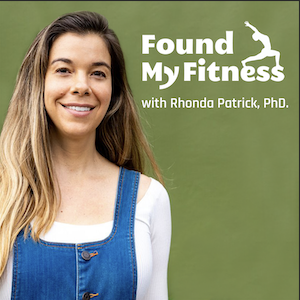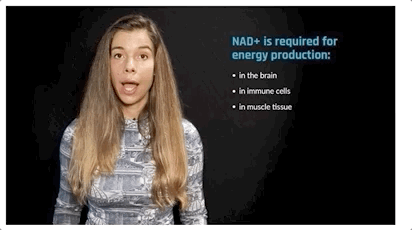Discovery of genes that reset the Horvath Clock | David Sinclair
Get the full length version of this episode as a podcast.
This episode will make a great companion for a long drive.
The Omega-3 Supplementation Guide
A blueprint for choosing the right fish oil supplement — filled with specific recommendations, guidelines for interpreting testing data, and dosage protocols.
Dr. Shinya Yamanaka discovered a group of proteins that can reprogram differentiated (mature) cells into pluripotent stem cells. These proteins, now called Yamanaka factors, are highly expressed in embryonic stem cells in mice and humans. Their short-term expression can ameliorate cellular and physiological hallmarks of aging and prolong lifespan by resetting the Horvath epigenetic clock. In this clip, Dr. David Sinclair talks about the discovery of genes that can reset the Horvath epigenetic clock.
David: We haven't published it yet. So my graduate student, Yuancheng, will probably kill me for saying too much. But we're both so excited. Even today, he sent me a text about, a new breakthrough is that we've found not only the genes that trigger them to move, but then the genes that reset the Horvath clock once they get there.
Rhonda: Really? You've identified the genes that can make them move...make the methyl groups move?
David: Methyl groups. Yeah, and reset the methyl groups and what gets them to go back.
Rhonda: Okay, okay. Wow.
David: Yeah. So, I'll give a hint to the viewers. And maybe this will be published and, shortly, we'll see. So we're using what's called the Yamanaka factors. And so, the first, person to do this...
Rhonda: Explain what that is.
David: Sure. Well, the first person to use these factors was Shinya Yamanaka, a Japanese scientist who looked through a lot of different genes and found a set of four factors that if you put them into an adult cell, say, a skin cell, they would go back to being very primitive, so primitive, what we call a pluripotent stem cell that you could then turn those cells into a nerve cell or even regrow an eye in the dish. It was a breakthrough that led to the Nobel Prize being awarded to him in 2012.
Rhonda: You just take a person's skin cell and turn it into a neuron. I mean, that's, like, amazing.
David: Why not? We do... I mean, a high school student can do that these days. It's not that difficult. Typically, with science, once you know how something works, it's pretty easy. Same with aging, I think. But what we've discovered is that... And first of all, I want to give a lot of credit to someone at the Salk whose name is Juan Carlos Belmonte, a professor there. A good friend of mine and he's...and he did the experiment that we were trying to do, so we were just slightly scooped on that. But he made a mouse where he could turn on these four Yamanaka genes. And that, for sure, they stand for O,S, K, and M. And that mouse, when he switched them on, died within a couple of days. So that's not great for those mice. But what he then cleverly did was he didn't give up or his postdoc didn't give up. What he did was he turned the genes on for a couple of days and then stopped, let the mice recover for a few days, and then turned them back on.
So, you know, I feel for the mice because they were headed towards death and they could recover and then they cycle, but actually, they ended up being healthier. The premature aging mouse model that he had lived, I think it was 40-plus percent longer. But also, he's shown since then that you can use these factors to improve wound healing and kidney healing.
Rhonda: So was he boosting their stem cell pools, and their... So he was, like, regenerating tissues or?
David: What I think he's doing is what we're doing in the lab, which is getting those proteins that have moved around and lost their way to go back to where they were when they were young and then reset the methylation clock. And now a cell doesn't just think it's young. It's literally young.
Rhonda: Was he using CRISPR to do this?
David: Well, he might've, but it was a transgenic mouse, which means he inserted those four genes into the mouse's genome with an on-off switch.
Rhonda: Yeah. Okay.
David: We don't do that. We use viruses that we can give to old mice. He has to start from a single egg. We can go into old mice and within a few weeks, figure out if we've reversed aging in a tissue or in the whole mouse. And we've also discovered that it's best if you don't use all four of those factors, we have to leave one of those off because it's toxic. It's the Myc gene, Myc is an oncogene, but the other three worked great. And the results that came in through the tech today use those three genes to protect neurons from dying in the mouse but also in the dish. And the gene that can restore the Horvath clock was required. And so we're very close, I think, to seeing the future of where maybe eventually we don't use viruses, maybe we have molecules that can do this that we can put in a drip or in a pill that can send us back another 20 years.
Rhonda: Wow. That's super exciting. I'm, like, very pumped up about this whole epigenetic clock research and linking it to, you know, basically, like, being able to reverse aging. I mean, I think that... Do you know... Is there any evidence that fasting has any effect on that epigenetic clock? Has that been shown, do you know?
David: I have not seen that. I think what I've seen from Steve's work and others is that you can slow the rate of the clock, but I haven't seen reversal yet. And I've shown Steve the results I just told you and he's pretty excited that someone's figured out... We think we've figured out why the clock ages, what's causing it, but also what's the first reset that's ever been found. But I would suspect that fasting can help, but probably, it's not enough to really do what these powerful genes are doing. One day, we'll figure it out but... So fasting, I still do that as much as I can for one main reason, and that is that it's going to activate these defenses that, at least, slow down and somewhat stabilize the epigenome decay that we call. But we're probably going to need something more potent to really go back 20 years. But do we slow down aging by fasting and running? Absolutely, no question.
A biomarker of aging based on alterations in an organism’s DNA methylation (DNAm) profile. Methylations occur naturally and regulate gene expression. With age, the methylation state of a gene may change. These changes are quantifiable, serving as a means to gauge biological age, which is often different from chronological age. Several variations of epigenetic clocks have been identified. They are generally categorized according to the type and number of tissues used to formulate the calculation, as well as the type of age measured (e.g., epigenetic versus phenotypic). The most widely used clocks include: - HorvathAge, which predicts intrinsic epigenetic age acceleration, a phenomenon in which an organism's aging is influenced by internal physiological factors such as normal metabolism and genetics.[1] - DNAm PhenoAge, which predicts time-to-death among people of the same chronological age, based on biomarkers of age-related disease.[2] - DNAm GrimAge, which predicts lifespan and healthspan, based on DNAm surrogates in blood, including biomarkers of aging and alterations in blood composition.[3]
- ^ Horvath S (2013). DNA methylation age of human tissues and cell types. Genome Biol 14, 10.
- ^ Levine, Morgan E.; Lu, Ake T.; Quach, Austin; Chen, Brian H.; Assimes, Themistocles L.; Bandinelli, Stefania, et al. (2018). An Epigenetic Biomarker Of Aging For Lifespan And Healthspan Aging 10, 4.
- ^ Lu, Ake T.; Quach, Austin; Wilson, James G.; Reiner, Alex P.; Aviv, Abraham; Raj, Kenneth, et al. (2019). DNA Methylation GrimAge Strongly Predicts Lifespan And Healthspan Aging 11, 2.
A biochemical process involving the addition or subtraction of a methyl group (CH3) to another chemical group. In epigenetics, a methyl group is added to an amino acid in a histone tail on DNA, altering the activity of the DNA segment without changing its sequence. Under- and over-methylation are referred to as hypomethylation and hypermethylation, respectively.
A gene that has the potential to cause cancer. A proto-oncogene is a normal gene that regulates cell growth and proliferation but if it acquires a mutation that keeps it active all the time it can become an oncogene that allows cancer cells to survive when they otherwise would have died.
An oncogene is a mutated form of a gene ordinarily involved in the otherwise healthy regulation of normal cell growth and differentiation. Activation of an oncogene, through mutation of a proto-oncogene, promotes tumor growth. Mutations in genes that become oncogenes can be inherited or caused by environmental exposure to carcinogens. Some of the most common genes mutated in cancer are the IGF-1 receptor and its two main downstream signaling proteins: Ras and Akt.
Capable of developing into any type of cell or tissue except those that form a placenta or embryo.
A cell that has the potential to develop into different types of cells in the body. Stem cells are undifferentiated, so they cannot do specific functions in the body. Instead, they have the potential to become specialized cells, such as muscle cells, blood cells, and brain cells. As such, they serve as a repair system for the body. Stem cells can divide and renew themselves over a long time. In 2006, scientists reverted somatic cells into stem cells by introducing Oct4, Sox2, Klf4, and cMyc (OSKM), known as Yamanaka factors.[1]
- ^ Takahashi, Kazutoshi; Yamanaka, Shinya (2006). Induction Of Pluripotent Stem Cells From Mouse Embryonic And Adult Fibroblast Cultures By Defined Factors Cell 126, 4.
An animal that has had its genome altered through the use of genetic engineering techniques, usually during early embryonic stages. Transgenic techniques are routinely used to introduce human disease genes or other genes of interest into strains of laboratory animals in order to study the function or pathology involved with a particular gene.
Proteins that can reprogram differentiated (mature) cells into pluripotent stem cells. Yamanaka factors are highly expressed in embryonic stem cells in mice and humans. Five Yamanaka factors have been identified: Oct4, Sox2, cMyc, Klf4, and NKX3-1. In a mouse model of premature aging, short-term expression of Oct4, Sox2, Klf4, and c-Myc ameliorated cellular and physiological hallmarks of aging and prolonged lifespan.[1]
- ^ Ocampo, Alejandro; Martinez-Redondo, Paloma; Platero-Luengo, Aida; Hatanaka, Fumiyuki; Hishida, Tomoaki; Lam, David, et al. (2016). In Vivo Amelioration Of Age-Associated Hallmarks By Partial Reprogramming Cell 167, 7.
Member only extras:
Learn more about the advantages of a premium membership by clicking below.
Get email updates with the latest curated healthspan research
Support our work

Every other week premium members receive a special edition newsletter that summarizes all of the latest healthspan research.
Aging News
- Listening to music and playing an instrument is linked to lower dementia risk.
- Speaking more languages is linked to slower biological aging.
- High-intensity exercise may amplify the health benefits of staying active in later life
- Long-term competitive sports linked to slower biological aging through reduced cellular stress.
- Semaglutide use reduces biological age by 3.1 years on average, with a 9% slower pace of aging as measured by DNA methylation.






